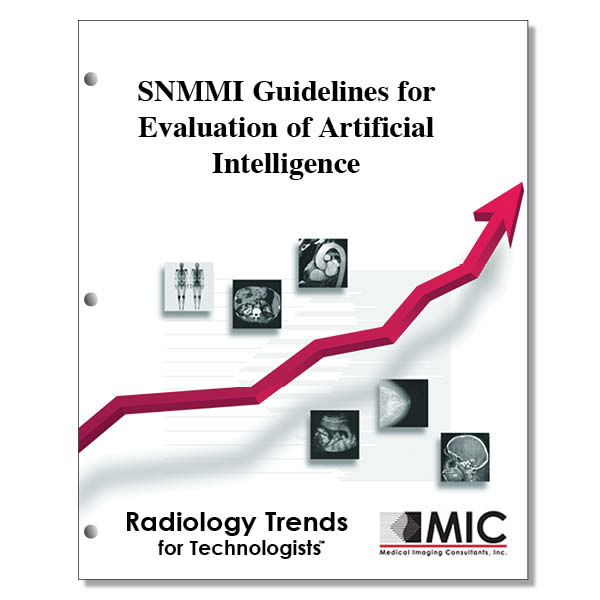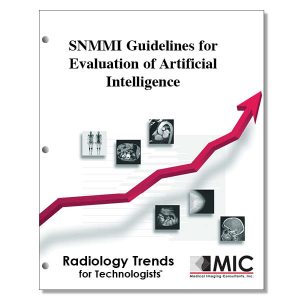

SNMMI Guidelines for Evaluation of Artificial Intelligence
Best practices are presented to evaluate AI algorithms developed for different parts of the imaging pipeline ranging from image acquisition to post-processing to clinical decision-making in the context of nuclear medicine.
Course ID: Q00789 Category: Radiology Trends for Technologists Modalities: Nuclear Medicine, PET, RRA3.0 |
Satisfaction Guarantee |
$34.00
- Targeted CE
- Outline
- Objectives
This course has been approved for 3.00 Category A credits.
No discipline-specific Targeted CE credit is currently offered by this course.
Outline
- Introduction
- Definition of the Clinical Task
- Patient Population for Whom the Task is Defined
- Definition of Imaging Process
- Process to Extract Task-Specific Information
- Figure of Merit (FoM) to Quantify Task Performance
- Proof-of-Concept (POC) Evaluation
- Objective
- Study Design
- Output Claim of the POC Study
- Technical Task-Specific Evaluation
- Objective
- Study Design
- Output Claim from Evaluation Study
- Clinical Evaluation
- Objective
- Study Design
- Output Claim from Clinical Evaluation Study
- Postdeployment Evaluation
- Objective
- Evaluation Strategies
Objectives
Upon completion of this course, students will:
- list the inaccuracies that can result from an AI algorithm
- describe the generalizability of AI algorithms to other data sources
- list the categories of clinical tasks for AI algorithms
- describe examples of classification clinical tasks performed by an AI algorithm
- describe examples of quantification tasks performed by an AI algorithm
- list the patient population features that should be defined in a task claim
- identify the study component needed to obtain a figure of merit (FoM) to quantify task performance
- identify the characteristic that provides evidence for AI algorithm generalizability
- identify the evaluation class that assesses AI algorithms that improve diagnostic, predictive, prognostic, or therapeutic decisions
- list off-label uses of an AI algorithm assessed by postdeployment evaluation
- identify the AI algorithm evaluation class that uses task-agnostic FoMs
- describe data sources that AI algorithms are evaluated against in POC evaluation
- list the evaluation classes that include patient population in the output claim
- identify the algorithm evaluation class that does not consider clinical outcomes
- describe the technical study evaluation types used to evaluate the accuracy of an AI algorithm
- list the types of AI algorithm technical evaluation studies
- identify software used to simulate an imaging system for realistic simulation studies
- list data types used in realistic simulation studies
- describe the study type used to conduct technical evaluation studies
- describe the technical task-specific evaluation studies that may need human expert readers
- identify the study type that is the most common mechanism for evaluating AI algorithms
- list the characteristics of retrospective clinical evaluation studies of AI algorithms
- describe the most common and strongest prospective interventional study design
- list the characteristics of prospective interventional studies of AI algorithms
- identify the study type recommended to evaluate a purely descriptive AI algorithm
- identify the study type recommended to evaluate a fully autonomous prescriptive AI algorithm
- describe clinical outcomes that are used as reference standards in a clinical evaluation study
- list FoMs used to demonstrate the utility of an algorithm in prognostic decision making
- describe the postdeployment evaluation technique used to identify root causes for equipment failure
- describe the utility of image-quality phantom studies in postdeployment evaluation
- identify the RELAINCE guidelines evaluation classes that use external testing cohorts
- describe a possible solution to AI algorithm performance problems resulting from data shift
- identify the evaluation class in the RELAINCE guidelines that is optional
